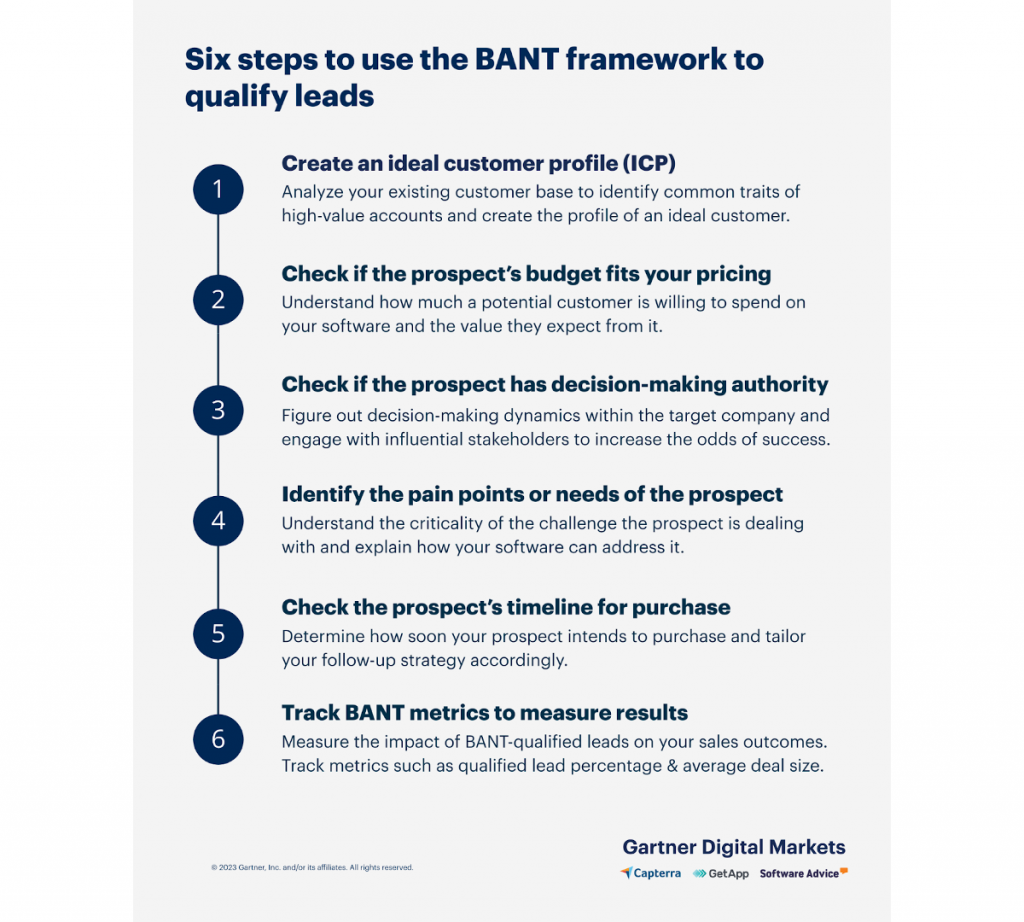In the early stages of my career, I had the wrong notion that ‘pipeline’ was just for the sales team. Only a few years ago, I discovered it provides a 360-degree view that benefits marketing, customer service, and product development teams.
In fact, sales pipeline management is pretty identical to project management.
You see, a project manager relies on clear steps and milestones to ensure the project stays on track, just like a sales pipeline does for closing deals.
And both require constant monitoring, task prioritization, and adjustments to improve outcomes and ensure goals are met on time and within scope.
In this detailed guide, you’ll learn how to create a sales pipeline, its different stages, benefits, and more. Let’s get started.
What Is a Sales Pipeline?
A sales pipeline is the step-by-step process a prospect goes through before becoming a customer. It helps you track every interaction, from the initial contact to the final sale.
A simpler explanation would be –
The pipeline is like a visual map of the entire sales process. It shows you where each potential customer (or “prospect”) is in their journey from “just browsing” to “ready to buy.”
Now, why is this important?
( I have created a detailed section for that below. For now, I’ll keep it short. )
Without a clear pipeline, you’re essentially flying blind. And with a well-defined one, you can –
- Predict revenue, manage resources, and focus on leads most likely to close.
- See exactly where each prospect stands in the buying process.
- Spot any stages where deals tend to stall.
So, what are the stages of a sales pipeline? Let’s find out.
What Are the Different Sales Pipeline Stages?
The stages of a sales pipeline vary depending on the business model. However, the typical structure follows these key stages –
- Prospecting / Lead Generation
- Qualification
- Initial Contact
- Proposal / Offer
- Post-Proposal / Negotiation
- Closing
- Post-Sale
Let’s now have a closer look at what happens in each stage.
1. Prospecting / Lead Generation:
Lead generation is the first stage of managing a sales pipeline, where you identify potential customers.
It often involves cold calling, email outreach, social media connections, or even inbound marketing to attract new leads. Prospecting helps you find individuals or companies who might be a fit for your product or service. A lot of times, it leads to uncovering future opportunities.
2. Qualification:
Not all leads are created equal. This stage involves determining if the lead is worth pursuing.
- Do they have a real need for your product?
- Can they afford it?
- Will they make a decision soon, or are they just browsing?
In my experience, this is where you dig deep into their budget, authority, needs, and timeline—also known as BANT criteria. It ensures you’re investing time and resources wisely by focusing on leads most likely to close.

3. Initial Contact:
Once you’ve identified a lead worth pursuing, engaging with them directly is the next step.
This might be through a discovery call, email, or demo where you start the conversation and uncover their specific pain points. Here, your job is to listen to the prospects. Remember, you’re gathering the critical information needed to tailor your pitch down the line.
This stage resembles a project’s initial meeting, where stakeholders clarify goals and expectations.
4. Proposal / Offer:
Once you have understood the lead’s needs, it’s time to create a solution that outlines your product or service and how it solves their problems.
Whether it’s a formal proposal or a detailed product offer, it should be clear, concise, and persuasive. It should also include a clear call to action, such as asking the lead to schedule a meeting or sign a contract.
In my view, a good proposal is not just about selling—it’s about framing your offer as the best solution for their business.
5. Post-Proposal / Negotiation:
Now, the real back-and-forth begins. Negotiation can involve pricing, terms, delivery timelines, and more. This stage requires patience and adaptability, as it’s your job to handle objections and work out mutually beneficial terms.
In my experience, this stage can make or break a deal. It is a normal part of the sales process and can be a valuable opportunity to build a relationship with the lead.
6. Closing:
Now, it’s time to seal the deal. If the lead agrees to your terms, you can close the deal. Everything you’ve done up to this point has led to this point, so it’s crucial to execute this phase smoothly.
This is the final step, where contracts are signed and the customer officially comes on board. It may involve signing a contract, collecting payment, or delivering the product or service.
7. Post-Sale
The post-sale stages are often the beginning of long-term success. They involve onboarding, customer support, and ensuring clients are happy with their purchases.
Strong post-sale management is critical for building loyalty, driving repeat business, and generating referrals. You can also use post-sale interactions to gather feedback on your product or service and identify opportunities for improvement.
How to Manage a Sales Pipeline: A Step-by-Step Guide
Having a well-defined sales pipeline is a great start. However, knowing how to manage it can dramatically improve your conversion rates and optimize your team’s performance.
But wait a minute! How do you build a sales pipeline?
Let’s quickly walk you through the steps needed to do so. (Skip these pointers if you want to proceed to the steps of pipeline management in sales.)
- Define your ideal customer: Analyze your current customer base and identify common characteristics. Figure out what needs, preferences, and pain points they have.
- Identify prospects: This can be done through lead generation, referrals, or social media. Keep track of your prospects using a CRM system.
- Qualify prospects: Assess the prospect’s budget, authority, need, and buying timeline to focus efforts on those more likely to buy.
- Develop a sales strategy: Create a sales pitch, set goals, and identify key performance indicators.
- Create a sales pipeline: Break down the sales process into stages and set up a standardized process for the sales team.
- Assign responsibilities: Delegate tasks effectively for each sales pipeline stage and provide ongoing training and support.
- Monitor & improve: Track the pipeline and analyze performance metrics to identify areas for improvement.
That should give you a basic understanding of building a sales pipeline. If you’re already past the first step, here’s a step-by-step guide to help you manage your pipeline –
Step 1: Define Sales Stages Clearly
Your pipeline is only as effective as its clarity.
Each stage—whether prospecting, qualifying, or closing—should be well-defined. These stages should align with the buyer’s journey and reflect the specific milestones your sales team follows.
In my experience, teams perform better when they all work from the same playbook. Clear definitions allow for a uniform approach, which translates to predictable outcomes.
Step 2: Regularly Update the Pipeline
The sales pipeline should be a living, breathing document that is constantly updated as deals progress (or stall). Older pipelines lead to unrealistic forecasts and misaligned efforts.
Regularly review the pipeline so that you always know where each opportunity stands. Automated tools can help, but human oversight ensures nothing is missed.
It’s pretty similar to updating a project timeline—delays, advancements, or new tasks must be reflected in real time to ensure everyone is on the same page.
Step 3: Focus on Active Opportunities
I know it’s tempting to chase every lead. But in the long run, you’ll figure out wasting efforts for nothing.
That’s why you should focus your energy on active opportunities moving forward. Use your pipeline data to identify which leads are progressing and where they are getting stuck. Focus on nurturing these rather than spreading yourself too thin over leads that aren’t ready to buy.
Step 4: Track & Analyze Metrics
Your pipeline data is invaluable.
Metrics like conversion rates, deal velocity, and win-loss ratios tell you what’s working and what isn’t. You should analyze these metrics regularly to spot trends, optimize strategies, and make informed decisions about where to focus your efforts.
Step 5: Follow-up Consistently
One of the biggest mistakes in sales pipeline management is neglecting follow-ups. Are leads dropping off at a particular stage? Is your sales cycle too long?
Leads often don’t convert because there isn’t enough follow-up at crucial points in their journey. Make it a habit to follow up consistently, whether it’s after a demo, a proposal, or even after a lost deal.
Automation tools can help with reminders, but personalized touches in your follow-ups can make a huge difference.
Step 6: Keep Your Pipeline Clean
A cluttered pipeline filled with stagnant deals can distort your view of what’s really going on. Regularly cleaning out old or unqualified leads ensures your pipeline reflects reality.
Remove deals that are unlikely to close and focus on those with potential. This will help the sales team concentrate on the right opportunities and make more accurate forecasts.
(There’s a separate section for this in the next part.)
Step 7: Choose the Right CRM
You need a system to organize and track your pipeline. A Customer Relationship Management (CRM) tool is your best friend here. But how do you choose the right CRM?
There are tons of options out there, from simple spreadsheets to robust software like BIGContacts (for startups/SMBs) or Microsoft Dynamics 365 (for large enterprises).
When used effectively, CRMs reduce manual effort and help you stay organized. You can also be assured that no opportunity goes unnoticed.
How to Clean & Optimize a Sales Pipeline
One of the secrets to effective sales pipeline management that a lot of people tend to miss is cleaning the pipeline. It’s essential to ensure it stays functional, accurate, and efficient.
Let’s take a look at the steps –
1. Remove Stagnant Deals
Clear out deals that have been inactive for too long or show no signs of progressing. An overloaded pipeline can distort your forecasts and waste valuable time.
If a prospect hasn’t engaged in weeks (or months!), it might be time to move them out of the active pipeline. This doesn’t necessarily mean giving up on them entirely. You can move them to a separate “nurture” list for future follow-up.
2. Re-Qualify Existing Leads
Sometimes, leads that looked promising initially might not be the right fit after all.
Things change, priorities shift, budgets get cut. It’s a good idea to periodically re-qualify your leads to make sure they still meet your criteria and have a genuine interest in your product or service.
3. Re-Engage Cold Leads
Before you completely discard a lead, consider trying to re-engage them. A simple email or phone call might be all it takes to reignite their interest. But if they’re truly uninterested, don’t waste more time.
4. Refine Your Stages
Take a close look at your pipeline stages. Are they clearly defined? Do they accurately reflect your sales process?
If not, you should see what changes can be made. Make sure each stage has clear entry and exit criteria and that the progression from one stage to the next is logical and efficient.
5. Segment Your Pipeline
Create different pipelines or stages for various deal types (e.g., small vs. large clients or regional vs. international). This helps you optimize strategies for each segment.
6. Implement Regular Audits
Schedule routine pipeline audits, perhaps monthly or quarterly, to review deal statuses, update any stalled leads, and ensure all information is current. These audits keep your pipeline lean and focused on active opportunities.
What Are the Best Practices for Sales Pipeline Management?
Sales pipeline management best practices. You’ve heard someone ask you this, probably.
But before you wonder what that is, let me break the ice: If you’re adept at managing a sales pipeline, you’re halfway familiar with the best practices.
Regardless, here’s a quick recap of the 7 best practices to optimize your pipeline for success –
#1 Keep It Clean:
Like a gardener prunes dead leaves to promote healthy growth, your sales pipeline requires regular maintenance. Regularly review your deals and remove any that are stagnant or no longer relevant. This way, you’ll be able to target the hottest prospects and avoid clutter.
#2 Stay Organized:
A cluttered pipeline is often confusing for the sales team.
Use your CRM to categorize deals, add tags, and keep detailed notes. The more organized you are, the easier it will be to track progress and identify any roadblocks.
#3 Prioritize High-Value Deals:
Not all deals are created equal. Some have the potential to be real game-changers for your business. Identify those high-value deals and prioritize your efforts accordingly.
So, what does this mean? Well, it means assigning them to your top salespeople or giving them extra attention to ensure they move smoothly through the pipeline.
#4 Automate What You Can:
I’ve seen a lot of people use their CRM platform to automate tasks like email follow-ups, task reminders, and lead qualification. This frees up time to focus on what really matters: building relationships and closing deals.
#5 Communicate Effectively:
Keep the lines of communication open throughout the sales process. Regularly update prospects on the status of their deal and be responsive to their questions and concerns.
Remember, clear and consistent communication builds trust and helps move deals forward.
#6 Analyze & Refine:
Regularly analyze the pipeline metrics to identify areas for improvement. You can use this data to refine your process and make adjustments as needed.
#7 Celebrate Wins:
Closing a deal is a big accomplishment! Take the time to celebrate your wins and acknowledge the hard work of your sales team. Needless to say, this boosts morale and motivates everyone to keep pushing for success.
Why Is Sales Pipeline Management Important?
Every business model relies on sales. So, managing the sales pipeline is a non-negotiable for everyone. And the benefits are more or less the same for all businesses.
Here are some of the most important benefits. Let’s check them out –
1. Track Sales Bottlenecks Faster
Imagine your sales process is a highway, and deals are the cars traveling along it. Here, pipeline management acts like a traffic camera – pinpointing where cars (deals) are slowing down or getting stuck (e.g., “80% of leads drop off after the initial quote”).
This allows you to investigate why that’s happening and fix the roadblock (e.g., “Simplify the quote form,” “Offer alternative pricing,” or “Provide more personalized follow-up”).
2. Prioritize Opportunities
Pipeline management helps you identify your “VIP” deals — the ones with the highest potential value and close probability.
This allows you to focus your best resources on those deals. So, you get a chance to increase your chances of winning them.
3. Get Data-Driven Insights
Your pipeline acts as a dashboard with real-time data on your sales performance. It tells you things like:
- Average deal size: Are you focusing on the right kinds of deals?
- Sales cycle length: How long does it typically take to close a deal? Can you speed it up?
- Conversion rates: At what stage are you losing the most leads?
This data lets you make informed decisions and optimize your sales strategy for better results.
4. Forecast Accurately
Pipeline management helps you answer the critical question: “How much revenue can we expect to generate in the coming months?”
Analyzing the deals in your pipeline, their value, and their stage can help you make more accurate sales forecasts. This can also help with budgeting, resource allocation, and overall business planning.
5. Empower Sales Reps
Pipeline management gives sales reps a clear roadmap and the tools they need to succeed. They can –
- Track individual performance and identify areas for improvement.
- Prioritize tasks and focus on the most promising leads.
- Access customer history and insights to personalize their approach.
The end result? Increased motivation, productivity, and, ultimately, more closed deals.
Sales Pipeline Analysis: Key Pipeline Metrics to Track
You’ve built your pipeline and now managing it effectively as well. But how do you know if it’s truly performing at its best?
That’s where sales pipeline analysis comes in.
Tracking key metrics helps you gain valuable insights into sales processes and identify areas for improvement. Here are some of the most important metrics to keep an eye on –
1. Number of Deals in Each Stage:
This gives you a snapshot of your pipeline’s health. Are deals evenly distributed across the stages, or are they piling up in one particular area? This can help you identify bottlenecks and allocate resources effectively.
2. Conversion Rates:
This tells you how effectively you’re moving leads through your pipeline. Calculate the conversion rate for each stage (e.g., what percentage of leads move from “qualification” to “needs analysis”?).
Low conversion rates might indicate a need to improve your sales process at that specific stage.
3. Sales Cycle Length:
How long does it take to close a deal, on average?
A long sales cycle can tie up resources and impact your cash flow. Track this metric to identify areas where you can speed things up, like streamlining your proposal process or improving your follow-up communication.
4. Average Deal Size:
This is the average value of your closed deals. Tracking this metric helps you understand your revenue potential and identify opportunities to increase deal size.
Perhaps you could offer upsells or cross-sells or focus on attracting higher-value clients.
5. Win Rate:
What percentage of your deals result in a win?
A low win rate might indicate problems with your qualification process, pricing strategy, or overall sales approach. Analyze your lost deals to identify common factors and make adjustments accordingly.
6. Customer Acquisition Cost (CAC):
How much does it cost you to acquire a new customer?
This metric helps you assess the efficiency of your sales and marketing efforts. If your CAC is too high, you might need to explore more cost-effective lead-generation strategies.
7. Customer Lifetime Value (CLTV):
This is the predicted revenue you’ll generate from a customer throughout their relationship with your company.
A high CLTV indicates that you’re attracting valuable customers who are likely to stick around. Focus on nurturing these relationships to maximize their lifetime value.
? Glossary:
- CAC: Customer Acquisition Cost is the total cost of acquiring a new customer. This includes all expenses related to marketing, sales, and other activities involved in engaging and converting potential customers into paying customers.
CAC = (Total Marketing and Sales Expenses) / (Number of New Customers Acquired)
- CLTV: Customer Lifetime Value is the predicted net profit that a customer will generate over their entire relationship with your company. It takes into account the customer’s purchase history, average order value (AOV), purchase frequency, and other factors that can influence their future spending.
CLTV = (Average Purchase Value) x (Average Purchase Frequency Rate) x (Average Customer Lifespan)
Close Deals Faster With Effective Sales Pipeline Management
With efficient sales pipeline management, you have a chance to maximize sales performance. In this blog, I shared everything you need to know to slay your pipeline management challenges.
And in all of this, a sales pipeline management software solution is essential. Adopting such software helps you stay ahead of the curve and succeed. Look for software that offers a free plan to test it before investing.
Take BIGContacts as an example. It’s one of the tools I always recommend to startups and SMBs looking for a reliable platform to manage leads and sales pipelines.
What I like the most is their free plan. It’s perfect for small teams! There are no feature restrictions – a rare sight for free CRM tools. Sign up today and start sailing your way to effortless sales pipeline management!
FREE. All Features. FOREVER!
Try our Forever FREE account with all premium features!





